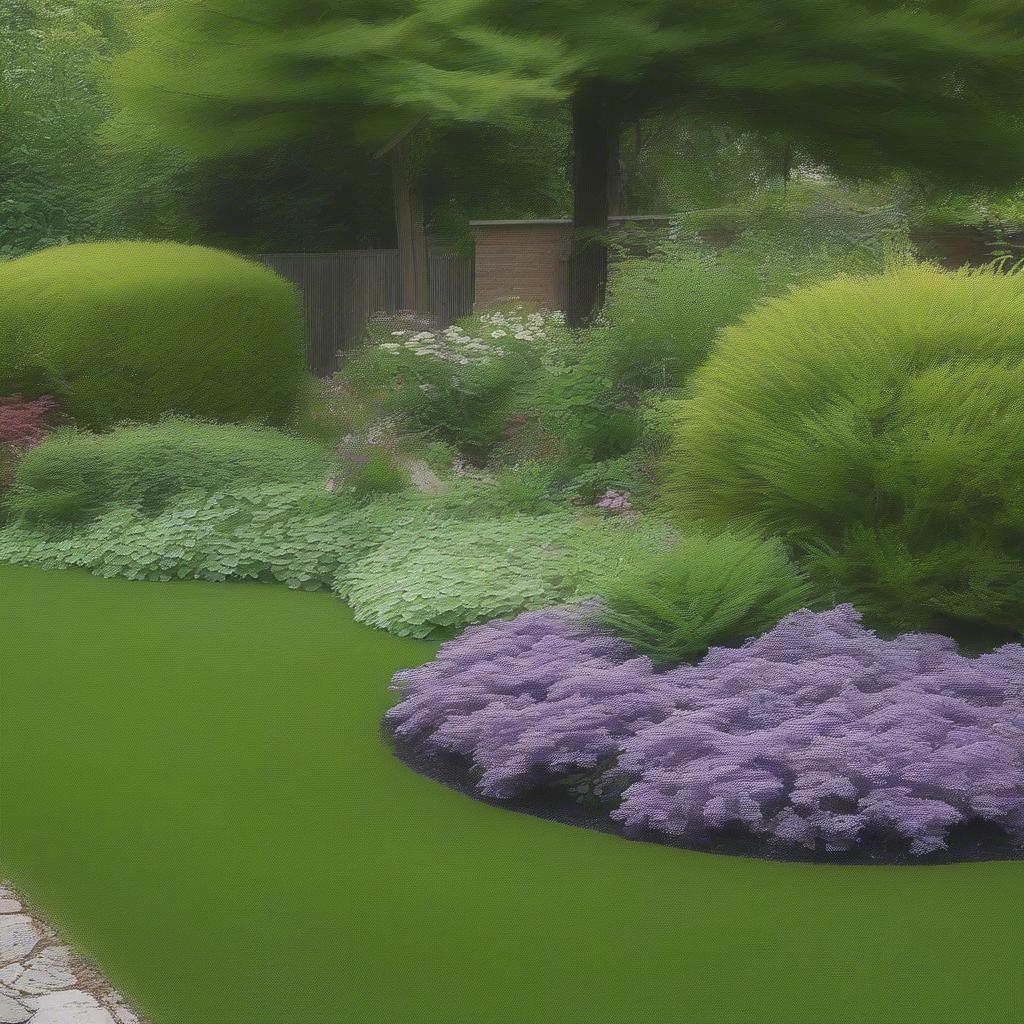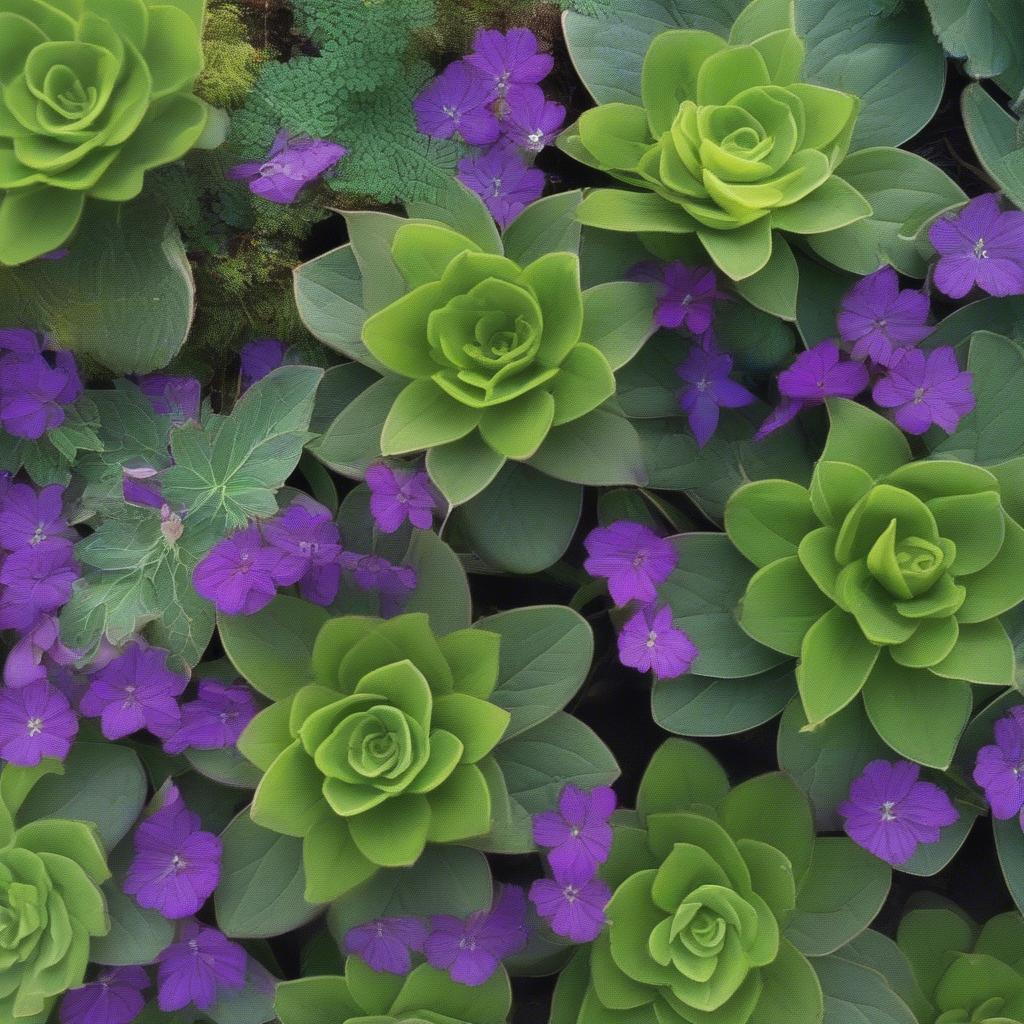
20 Ground Cover Plants to Spruce Up Your Backyard
If you’re looking to add some color and beauty to your yard, ground cover plants are an excellent option. Not only do they attract and support pollinators like bees and hummingbirds, but they also help prevent weeds from taking over and can even stop erosion on a hillside. Since most ground cover plants are perennials, they’re low maintenance and often won’t require pruning.
Things to Consider Before Planting
Before planting perennial flowers or shrubs, it’s essential to make sure that they’re suited to survive winters in your USDA Hardiness zone. You can find your zone here. Also, consider what kind of sun exposure the planting area receives.
Full sun is considered six or more hours of direct sunlight per day, while part sun is about three. Full shade means an area receives no direct sunlight, or perhaps only a brief period of mild morning sun, not blazing-hot afternoon sun.
Another crucial factor to consider is the spacing of plantings. If you want to fill an area quickly, you’ll need to plant close together, or it could be years before you see the desired results. Our advice is to read the plant tag or description to determine the recommended spacing so that your plants grow together quickly.
Top Ground Cover Plants
Ahead, we’ve rounded up the best ground cover plants to spruce up your backyard. Whether you have a small garden or a large, rambling yard, we’ve got beautiful ground covers for every sort of garden.
1. Japanese Forest Grass
The handsome, strappy foliage of this perennial adds splashes of bright green, chartreuse, or gold color to shady areas. It tends to do best in moist areas. Zones 5 to 9
Sun exposure: Part to full shade
2. Heuchera
Heuchera, also known as coral bells, come in an array of pretty colors ranging from lime green to deepest burgundy and every shade in between. Some types of these perennials tolerate either full shade to part sun, so read the plant tag or description to be sure about what you’re buying. Zones 4 to 9
Sun exposure: Part sun to full shade
3. Sedges
The grass-like foliage of sedge comes in many different colors, including variegated types. Sedge is a good choice for a low-growing, colorful perennial that needs almost zero maintenance. Zones 5 to 9
Sun exposure: Part sun to full shade
4. Japanese Painted Fern
This beautiful fern makes a stunning ground cover when planted in masses. The silver and maroon-colored fronds seem to shimmer in the shade. Bonus, deer tend to leave this perennial alone. Zones 3 to 8
Sun exposure: Full shade
5. Pachysandra
Glossy, low-growing foliage with teeny white flowers will spread to cover problem areas, such as beneath trees. This perennial is also deer-resistant. Zones 4 to 9
Sun exposure: Part sun to full shade
6. Lady’s Mantle
Lady’s mantle, also known as alchemilla, has hundreds of delicate gold flowers in spring, but its most charming feature is the way dewdrops and raindrops seem to sparkle on its scalloped foliage. It’s stunning when planted in large swaths. Zones 3 to 7
Sun exposure: Part to full sun
7. Lilyturf
It doesn’t get any tougher than lilyturf! Also known as liriope, this fast-growing evergreen perennial has grass-like leaves and clusters of purple flower spikes. Once established, lilyturf is drought-resistant, and it can handle both full shade and full sun. Zones 5 to 10
Sun exposure: Part to full sun or shade
8. Hens and Chicks
Succulents, such as hens or chicks, make a colorful, drought-tolerant ground cover. Also called sempervivum, this perennial is a fun addition to rock gardens or hot, sunny areas of your garden where nothing else wants to thrive. Its fleshy leaves help it retain moisture so it rarely needs watering. Zones 4 to 8
Sun exposure: Full sun
9. Ice Plant
Ice plant, also called delosperma, is a succulent with bright flowers in an array of vivid hues from hot pink to orange with pink centers. This perennial is drought-tolerant once established. Make sure to buy delosperma, not Carpobrotus edulis, which is also called ice plant but is actually an invasive species. Zones 5 to 10
Sun exposure: Full sun
10. Creeping Jenny
The chartreuse foliage of this ground-hugging perennial is quite charming. Tiny, inconsequential flowers appear in spring, but the main reason to plant this is because it’s very fast-growing. It looks adorable creeping around paths and can tolerate light foot traffic. Zones 3 to 9
Sun exposure: Part to full sun
11. Lily of the Valley
Lily of the valley has tiny white flowers that resemble bells and strappy, green leaves. This sweetly-scented, old-fashioned perennial spreads easily, some say it is invasive in gardens. Keep it in check by planting it in a spot with a natural border to stop rampant growth, such as between the sidewalk and the house. Zones 3 to 9
Sun exposure: Full shade to part sun
12. Creeping Thyme
Low-growing mats of creeping thyme are covered in teeny purple or white flowers in late spring, which makes it a haven for pollinators. This tough perennial spreads rapidly, is cold-hardy, grows in poor soil, and is drought-tolerant once established. Of course, you also can snip off the leaves for cooking. Zones 3 to 9
Sun exposure: Part to full sun
13. Creeping Juniper
This type of evergreen comes in an array of shapes and sizes. Junipers are tough-as-nails once established, tolerating poor soil and drought conditions. The horizontally-spreading branches of creeping junipers make a dense mat that weeds can’t penetrate. Zones 3 to 9
Sun exposure: Full sun
14. Dead Nettle
Dead nettle, also known as lamium, is a low-growing perennial with silver-splashed leaves and bursts of purple, pink, or white flowers that appear in spring and early summer. Though it prefers shade, it will tolerate some morning sun. Zones 3 to 8
Sun exposure: Part shade or sun
15. Ajuga
Glossy leaves of deep green, bronze, and chocolate-brown make this perennial a great low-growing, low-maintenance ground cover. In summer months, little spikes of blue, purple, pink, or white flowers will appear. Ajuga spreads rapidly, tolerating shade or sun. Zones 4 to 9
Sun exposure: Part sun to full shade
16. Aronia
Aronia is a pretty low-growing native shrub that has tiny white flowers with glossy green foliage. When several are planted together, they form a dense mat that thrives in almost any type of soil. It also boasts beautiful fall berries and foliage. Zones 3 to 9
Sun exposure: Full sun
17. Sedum
Low-growing varieties of sedum make easy-to-care-for ground covers, especially since its fleshy leaves retain enough water to survive dry spells. While some have small flowers, the main focus is the colorful foliage, which ranges from chartreuse to bronze. Zones 3 to 9
Sun exposure: Full to part sun
18. Lavender
If you’ve seen the lavender fields in Provence, you know this sweetly-scented perennial with purple or blue flowers looks amazing planted en masse. It doesn’t like wet feet, so make sure the soil is well-drained. There are many different varieties, so be sure to choose one that can survive your region’s winters. Zones 5 to 9
Sun exposure: Full sun
19. Epimedium
In early spring, large flowers that look like fairy wings appear on this cold-hardy perennial. Epimedium, also called bishop’s cap because of the shape of its flowers, can tolerate dry conditions once established. Zones 4 to 9
Sun exposure: Part sun to part shade
20. Thrift
This lesser-known evergreen perennial has attractive little mounds of grassy foliage, and teeny ball-shaped blooms that pop up in late spring to early summer. Thrift is cold-hardy and super-tough! Zones 3 to 8
Sun exposure: Part to full sun
About the Author:
Arricca Elin SanSone is a writer, editor, and content creator who specializes in lifestyle and gardening. With a background in health reporting, she applies these same research skills when writing about the science of growing things. She trials new plants in her expansive garden, and her houseplant collection consists of 60 varieties. Arricca has written thousands of articles for publications such as Country Living, House Beautiful, Good Housekeeping, Prevention, VERANDA, Southern Living, and more. She’s happiest when digging in the dirt, baking, or spending time with the people and dogs she loves.
Associate Lifestyle Editor:
Alyssa Gautieri is the associate lifestyle editor for Good Housekeeping, where she covers all things home and interior design. Prior to joining GH in 2022, she wrote for publications including ELLE Decor, Chairish, BobVila.com, Unique Homes Magazine, and LODGING Magazine, in addition to crafting product copy for home brands like BrylaneHome and VIGO Industries.
 What are ground cover plants?
What are ground cover plants?
Ground cover plants are low-growing plants that spread to cover the ground, typically used to suppress weeds, prevent erosion, and add color and texture to a garden.
Why should one use ground cover plants in their backyard?
Ground cover plants can add beauty, attract pollinators, suppress weeds, prevent erosion, and often require low maintenance.
What factors should one consider before planting ground cover plants?
Consider the USDA Hardiness zone, sun exposure, and spacing of the plants.
What are some examples of ground cover plants that thrive in shade?
Japanese Forest Grass, Heuchera, Sedges, Japanese Painted Fern, and Pachysandra.
Which ground cover plants can tolerate both full sun and shade?
Lilyturf, Dead Nettle, Ajuga, and Sedum.
What are some drought-tolerant ground cover options?
Hens and Chicks, Ice Plant, Lavender, and Thrift.
Are there any ground cover plants that can be grown in full sun?
Yes, options include Hens and Chicks, Ice Plant, Lilyturf, and Lavender.
Which ground cover plants are known to be deer-resistant?
Japanese Painted Fern, Pachysandra, and Ajuga.
What is the best ground cover for a small garden?
Any of the low-growing plants like Thyme, Ajuga, or Ice Plant are suitable for small gardens.
What is the best ground cover for a large garden space?
Larger spaces can accommodate ground covers that create more impact like Lady’s Mantle, Creeping Juniper, or Aronia.















